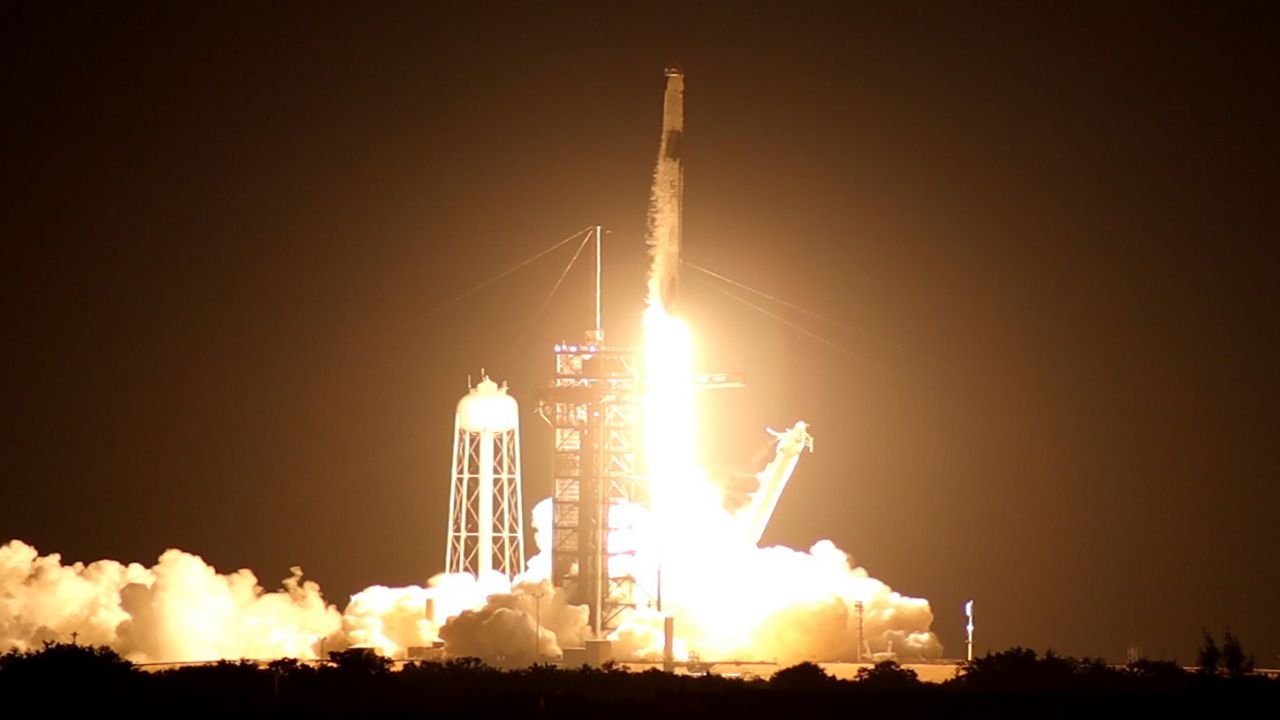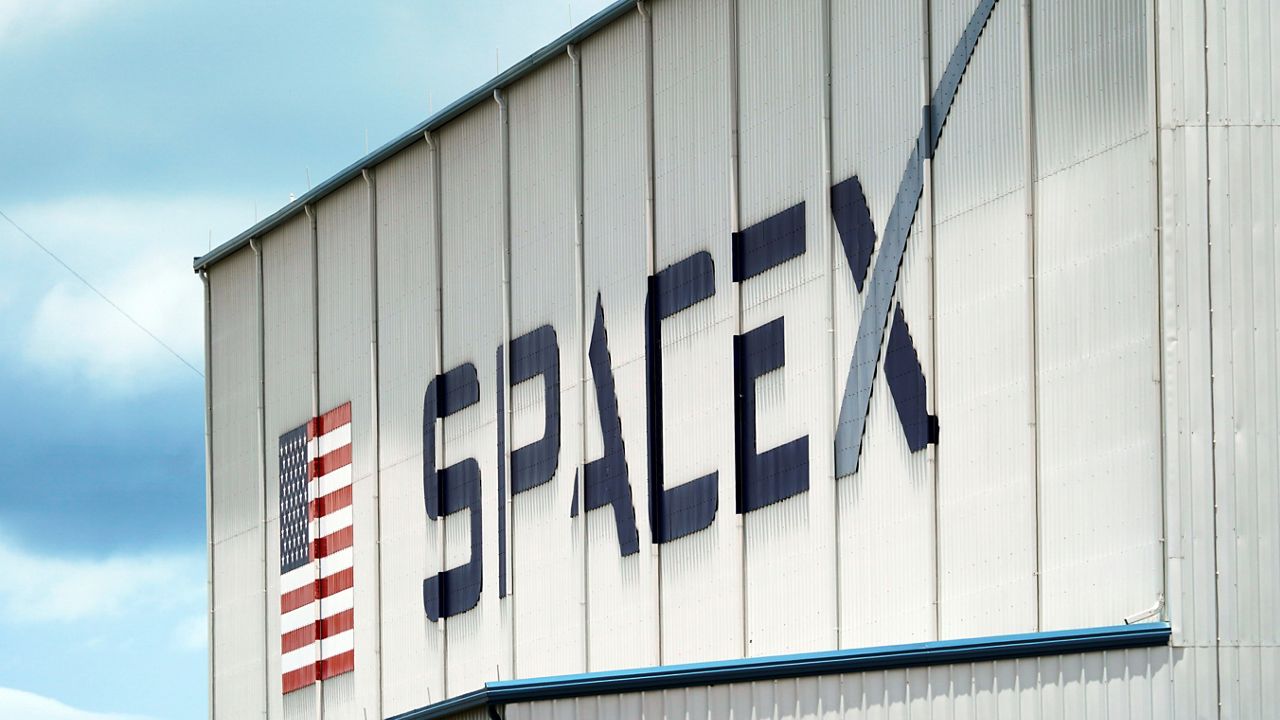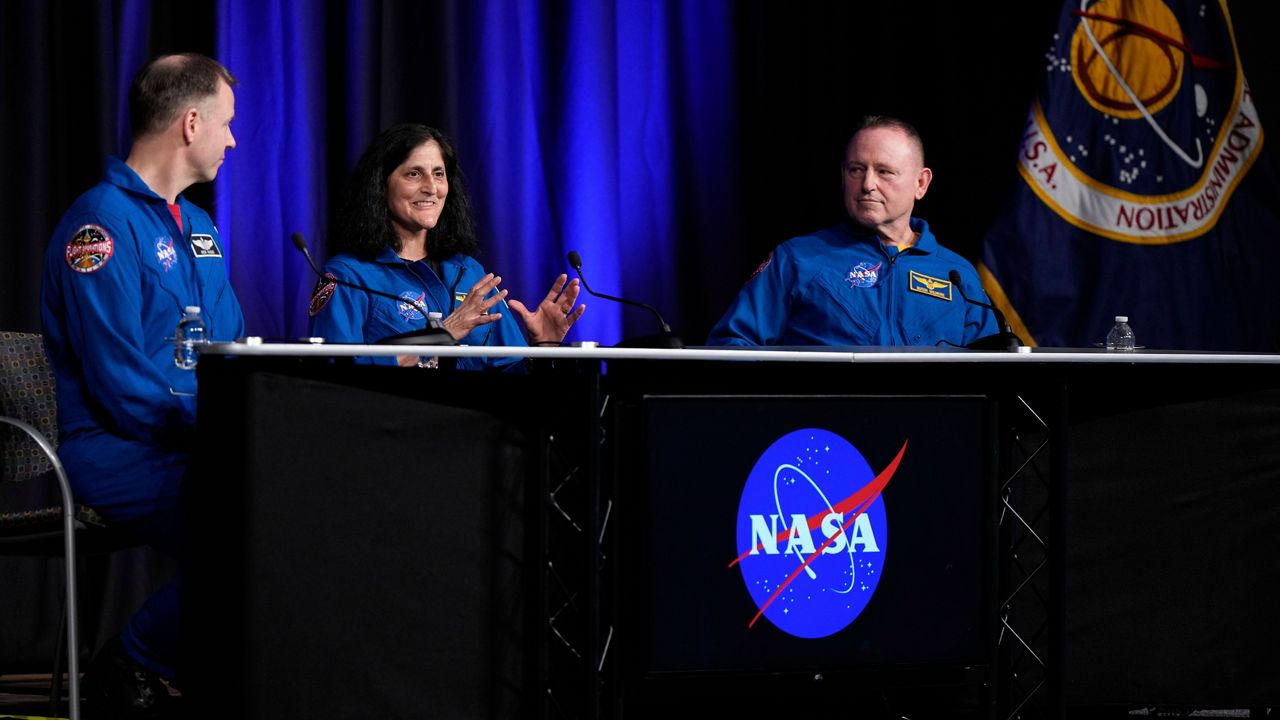As the space tourism industry continues to ramp up, a company offering a balloon ride to the edge is making a major investment in the Space Coast as it works toward a goal of launching dozens of times each year.
“Partially, it’s a financial consideration, but also, it’s the Space Coast” exclaimed Jane Poynter, the founder and co-CEO of Space Perspective. “This is where the history of human spaceflight has been forged. So, what a wonderful place for us to take our customers from to space. How amazing an experience that will be.”
Speaking with Spectrum News 13 on Friday, Poynter said they are looking forward to expanding their footprint in Brevard County beyond their current operations center at the Shuttle Landing Facility at Kennedy Space Center. The new campus will be at the Space Coast Regional Airport, across the river from KSC.
“It really allows us to put the pedal to the metal on our manufacturing side,” Poynter said. “We’re just starting to stand up manufacturing of our Spaceship Neptune capsule. So, that’s the first thing we’re building this year.”
The company is also getting underway with its balloon manufacturing, with a goal of flying a test flight toward the end of next year.
Balloon launch vs rocket launch
Space Perspective held its first test launch of Neptune One on June 18, 2021 from KSC, which was a run-through of its flight program.
The un-crewed flight reached its goal of more than 100,000 feet, flew over the Florida peninsula and splashed down in the Gulf of Mexico.
When crew are board, the Neptune capsule can support eight passengers along with the captain. It will feature 360-degree panoramic windows, a refreshments bar, wi-fi that allows for livestreaming and non-glare windows to support photography from within the capsule.
The capsule is launched using their SpaceBallon, which is the size of a football stadium when fully inflated, and was developed based on technology developed by NASA and other agencies.
“When we stand the balloon up on the launch pad, it stands 700 feet in the air. So, it’s taller than the VAB,” Poynter said. “And when it lifts off, it is silent and graceful. It is really the opposite of a rocket launch. It is going to be something to see and witness.”
As for what onlookers will see on the ground, there won’t be a brilliant streak of light searing across the sky. Instead, Poynter said launch watchers can expect a more prolonged view of their massive balloon and capsule.
“You can actually see it with you naked eye. It’s a little, tiny white dot in the sky,” Poynter said. “So, you will be able to see it the entire flight quite often, which is kind of cool.”
It will mean some early morning hours for onlookers as well. Poynter said most of their launches will take place in the pre-dawn hours to maximize the experience for their passengers.
“We want to get them up to space pre-dawn because we want them to be able to really experience that fullness of the starscape once they’re above the atmosphere, which is going to be crazy,” Poynter said. “And you don’t want the light pollution of the Sun once it’s up because once the sun is up, then you get that incredibly iconic black sky.”
Compared to the other space tourism opportunities that launched in 2021, Space Perspective won’t go quite as high:
- Virgin Galactic (Unity 22) July 11, 2021 – 282,773 ft.
- Blue Origin (NS-16) July 20, 2021 – 351,210 ft.
- SpaceX (Inpsiration4) – 1,210,630 ft. (orbital apogee of about 369 km or ~229 miles)
- Blue Origin (NS-18) Oct. 13, 2021 – 347,539 ft.
- Blue Origin (NS-19) Dec. 11, 2021 – 347,580 ft.
- Space Perspective (Neptune) Late 2024 – about 100,000 ft.
With the exception of the three-day Inspiration4 mission, the flight with Space Perspective will last significantly longer. From launch to landing, it’s a roughly six-hour experience compared to about 10 minutes on a Blue Origin New Shepard launch.
Poynter notes that also unlike the suborbital launches of Blue Origin and New Shepard, the ascent on a Spaceship Neptune is much more gradual.
“We are literally going to space at 12 miles an hour. So, it takes you about two hours to get up there, we’ll be floating on top of the atmosphere at the edge of space for about two hours and then it takes another two hours to come down,” Poynter said. “And that entire time, the eight passengers and pilot will be inside this very comfortable, pressurized capsule.”
Gearing up for passengers
With its planned next test flight happening toward the end of 2022, Poynter said then things will pick up dramatically.
“Once we start flying, we’re going to have a pretty robust cadence of test flights until we start flying our first human flight, crewed flight in 2023 and then in 2024 start our commercial flights,” Poynter said. “That’s our current estimated schedule.”
Part of gearing up is manufacturing the spacecrafts and balloons that will be needed for these tourist opportunities. The capsule itself will be reusable, but the balloon will have to be replaced each time.
Poynter said each capsule will fly at least 50 times each year, once they get to their regular launch cadence.
“We’re going to have a fleet of capsules as we start our commercial flights in 2024,” Poynter said. “The balloons though are a single-use. The material itself of the balloon is single-use, thus we need this amazing building that we’re putting up that is 700 feet long because the tables that we manufacture these balloons on are 600 feet long, which is quite a table.”
Right now, all of the passengers have to be adults in order to fly, but Poynter said they are working on being able to fly children as well in the future.
Unlike launches aboard Virgin Galactic, Blue Origin and SpaceX, Poynter said there won’t be extensive training to ride aboard a Spaceship Neptune.
“The way we’re designing this spaceship is that if you can get on a commercial airplane, you can pretty much get on Spaceship Neptune,” Poynter said. “So, yes there will be a safety briefing, but that’s about it. So really, what the preparation process is about is sort of preparing yourself for this extraordinary experience that you’re about to have.”
Investment in the Space Coast
In addition to announcing its investment in its new campus, which will include a $9 million, 120,000 square foot manufacturing building, Space Perspective plans to hire about 240 full-time permanent jobs by the end of 2026.
Hiring for the jobs with an average annual salary of $80,000 began this month and will continue throughout 2022.
“We have manufacturing jobs, which there is plenty of talent here for that, then we’re also a travel company. We’re a space travel company,” Poynter said. “So, we get to take advantage of the amazing tourism industry that’s here and pull from that as well. So, there’s really a breadth of experience in this region that we can draw from, as well as attract new talent from outside into this region as well.”
The investment by Space Perspective isn’t the only major project underway to bring jobs and production in the space industry to Brevard County.
During Tuesday’s meeting, Space Florida voted to continue negotiations with an undisclosed company that plans to develop and construct a spacecraft manufacturing facility at Orlando Melbourne International Airport.
Working under the name “Project Griffin,” this $300 million investment would bring with it “new construction, high-value equipment and tooling through conduit debt financing structure and create approximately 2,100 jobs by the end of calendar year 2025.”
Those jobs would have an average annual salary of $84,000 plus benefits.
In West Melbourne, engineering company USSI Global is looking into an expansion that would constitute the construction of a new 22,400-square-foot facility, which would house administrative, logistics and warehousing activities.
The company would invest $1.45 million in new capital investment and would add 21 new, full-time jobs over three years with an anticipated average annual wage of $43,190.
USSI Global, also known as National Service Source, Inc., is also considering Dallas, Texas, for this expansion, which is why the Economic Development Commission of Florida’s Space Coast’s Ad Valorem Tax Abatement Council recommended a 60 percent abatement for six years.
Charter Communications, the parent company of Spectrum News 13, is one of the investors of the EDC.
Brian Baluta, the vice president of communications for EDC said that abatement would be performance based, meaning it would not receive the abatement if USSI Global doesn’t met the job, wage and capital investment numbers annually it promised.









